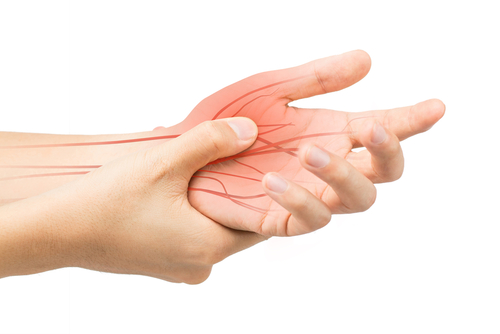New Questionnaire Measures Effect of Digital Ulcers on Hand Function

Researchers have come up with a new, patient-reported questionnaire to measure the impact of digital ulcers on hand function in people with scleroderma.
The questionnaire, “Hand Disability in Systemic Sclerosis-Digital Ulcers (HDISS-DU),” was developed using patient interviews and trial data. It can be useful in evaluating the effectiveness of treatments in clinical studies and clinical practice, the researchers said.
They published their findings in a study, “Psychometric validation of the Hand Disability in Systemic Sclerosis-Digital Ulcers (HDISS-DU) patient-reported outcome instrument,” in the journal Arthritis Research & Therapy.
Digital ulcers — painful sores on the fingers or toes — are among the most frequent signs of blood vessel disease associated with scleroderma.
These ulcers are often difficult to treat or do not heal. They can severely limit patients’ ability to perform everyday tasks, and may cause harmful infections leading to gangrene and amputation if not treated properly.
Currently, researchers in clinical trials of new treatments evaluate digital ulcers based on their presence or absence and their overall number. These measures don’t asses the full spectrum of symptoms, such as pain, impaired hand function, and disability, nor do they take into account the effectiveness of treatment from a patient’s perspective.
The HDISS-DU, developed in accordance with U.S. Food and Drug Adminstration standards, is meant to assess the impact of scleroderma-related digital ulcers on hand function. Researchers from institutions in France and the U.S., Actelion Pharmaceuticals, and Evidera created the questionnaire using a measure of hand disability in rheumatic patients, the Cochin Hand Function Scale.
They developed 24 questions, based on a seven-day recall period, with responses scored from 1 to 6, where 1 is, “Yes, without difficulty,” and 6 is “impossible.” A score of 5 meant “nearly impossible to do’”or “used unaffected hand only.”
Different analyses were conducted to evaluate the tool’s validity in people with scleroderma.
Based on interviews with 36 patients in the U.S., the researchers confirmed that HDISS-DU covers relevant issues and limitations, and that patients were able to understand its instructions, items, and response scale.
They then used data from 517 patients with scleroderma-related digital ulcers who took part in one of two Phase 3 trials — DUAL-1 (NCT01474109) and DUAL-2 (NCT01474122) — to assess the new instrument for reliability, construct validity, responsiveness, and thresholds for meaningful change.
Reliability refers to the consistency of results, while validity refers to the test’s ability to measure what it is intended to measure. Responsiveness covers the ability to distinguish clinically meaningful changes due to an intervention, such as a new treatment. A threshold for meaningful change indicates how much a score needs to change to reflect a relevant change in symptoms.
HDISS-DU demonstrated “excellent internal consistency and test-retest reliability, with satisfactory construct validity,” the researchers said.
Less severe digital ulcers, as measured by patient- or physician-reported global assessments, were rated less severe in HDISS-DU, as indicated by lower scores.
The HDISS-DU “was highly responsive to change in digital ulcer severity,” the researchers said.
Patients with no changes according to other criteria also had changes in HDISS-DU close to zero, while those who reported improvements had lower HDISS-DU scores. The preliminary threshold for meaningful change was a 0.5 difference in the HDISS-DU score.
“Using data from two large studies of [scleroderma]-DU patients, these psychometric analyses support the reliability, validity, discriminating ability and responsiveness to change of the HDISS-DU for evaluating treatment outcomes in future clinical studies and clinical practice,” the researchers said.






